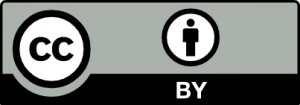Analisis Kelayakan Penyajian Buku Teks Bahasa Indonesia Kelas XI Kurikulum 2013 Edisi Revisi 2017
DOI:
https://doi.org/10.25299/s.v1i1.8828Keywords:
telaah, kelayakan penyajian, koherensi, keruntutanan alur pikirAbstract
Textbooks are textbooks in a particular field of study that are standard books, compiled by experts in that field for instructional purposes and purposes equipped with suitable means of teaching and easily understood by the wearers in school. In this study, one approach is used, namely qualitative approach. The feasibility of this presentation aims to find out the feasibility of the textbook and of course know how appropriate and effective the textbook is in the process. In the feasibility of this presentation there are also three indicators that need to be considered, such as from the technique of presentation, supporting presentation, as well as coherence and traceability of the flow of thought. The feasibility of this presentation aims to find out the feasibility of the textbook and of course know how appropriate and effective the textbook is in the learning process. This can be interpreted with the feasibility of useful presentation on the target level of learning carried out.
Downloads
References
Asri, S. sahrul. (2017). Telaah Buku Teks Pegangan Guru Dan Siswa Pada Mata Pelajaran Bahasa Indonesia Kelas Vii Berbasis Kurikulum 2013. RETORIKA: Jurnal Ilmu Bahasa, 3(1), 70–82. https://doi.org/10.22225/jr.3.1.94.70-82
Hendrawanto, Y. (2017). Kelayakan Buku Teks Bahasa Indonesia SMA/SMK: Analisis Kebahasaan, Isi, Penyajian, Kegrafikaan, dan Keterbacaan. i–18.
Mukhlis, M., Asnawi, A., & Rasdana, O. (2020). Pengembangan Bahan Ajar Teks Eksposisi Berbasis Tunjuk Ajar Melayu. Jurnal Sastra Indonesia, 9(2), 97–102. https://doi.org/10.15294/jsi.v9i2.39120
Rismawati, E., Widodo, M., & Agustina, E. S. (2015). Kelayakan Penyajian Buku Teks Mahir Berbahasa Indonesia Kelas VII SMP/MTS Kurikulum 2013. Jurnal Kata (Bahasa, Sastra, Dan Pembelajarannya), 3(5), 1–10.
Sugianto, S. D., M. Ahied, W. P. Hadi, & A. Y. R. Wulandari. (2018). Pengembangan Modul Ipa Berbasis Proyek Terintegrasi Stem Pada Materi Tekanan. Jurnal of Natural Science Education Research, 1(1), 28–39.
Suherli, Suryaman, M., Septiaji, A., & Istiqomah. (2017). Bahasa Indonesia SMA/MA Kelas XI. In D. Purnanto, L. Muliastuti, M. Tang Rapi, & F. Utorodewo N (Eds.), Kementrian Pendidikan dan Kebudayaan (Edisi Revi).
Suratni, & Paat, J. (2013). Penelaah Buku Teks Pelajaran Kurikulum 20013 Di Tinjau dari Aspek Kelayakan Isi, Penyajian, Bahasa dan Kegrafikan. Vol. 2, 15–30.
Syarifuddin, A. (2020). Kemampuan Pemecahan Masalah Ditinjau Dari Gaya Kognitif Dengan Cendekia. Jurnal Ilmiah Pendidikan, 8(1), 1–9. https://doi.org/10.33659/cip.v8i1.145
Wahyuni Indria, H., & Puspasari, D. (2017). Daftar Urut Kepangkatan dan Mengemukakan. 1(1), 54–68.
Wijayanti Tri, A. (2015). Implementasi Pendekatan Values Clarivication Technique (Vct) dalam Pembelajaran IPS di Sekolah Dasar. SOCIA: Jurnal Ilmu-Ilmu Sosial, 10(1), 72–79. https://doi.org/10.21831/socia.v10i1.5343





























